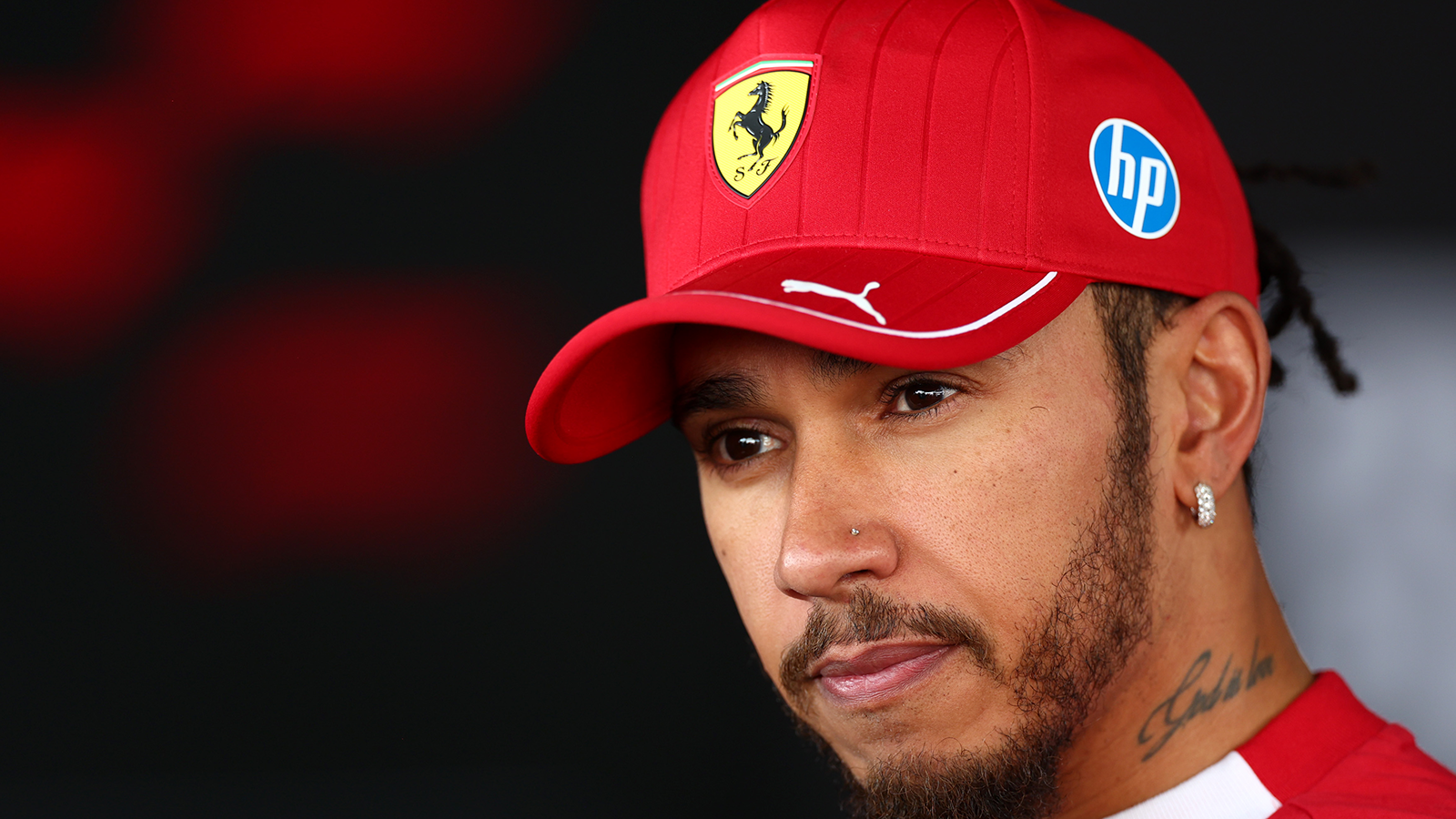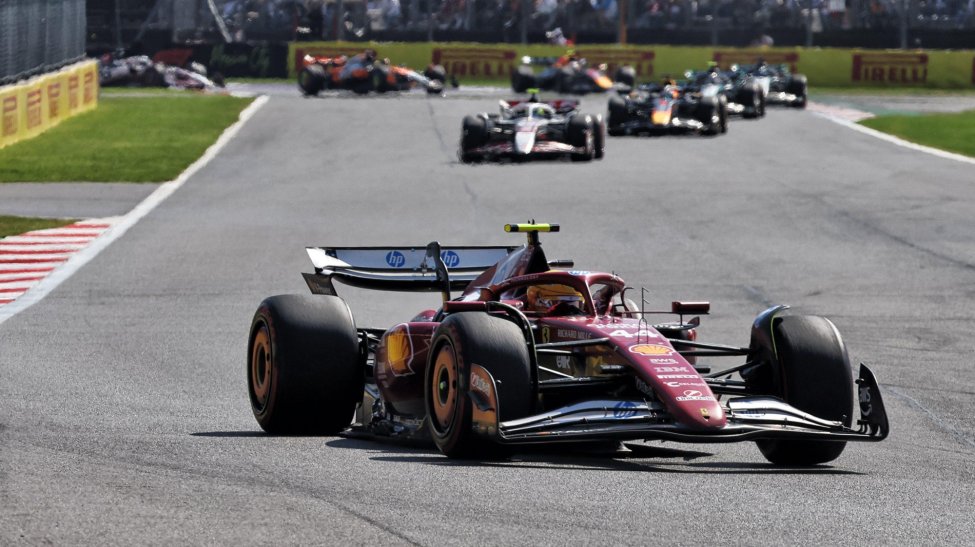The air in Mexico City was already thin, but the atmosphere inside the Ferrari cockpit was about to become charged with a raw, visceral emotion rarely heard from a driver of Lewis Hamilton’s pedigree.
This wasn’t just about a lost position or a momentary disadvantage; this was about a pattern, a perceived injustice that had finally pushed the seven-time World Champion past his breaking point. After a controversial 10-second penalty destroyed his chances for a desperately sought podium finish, the words exploded through the team radio: “That’s such bullshit man”.
It was a cry of fury, “raw, unfiltered, furious”, that cut through the silence of the Ferrari garage and reverberated across the paddock, forcing Formula 1 to confront a question it has long buried: Is there a fundamental double standard in the application of its rules, particularly when one side of the equation involves Max Verstappen and Red Bull?
The Mexican Grand Prix was supposed to be a chapter in Ferrari’s redemption story, a moment when Hamilton, running “one of his strongest races in red”, finally proved the SF-25’s potential. But instead, it became the flashpoint for a conflict over consistency and fairness that threatens to reignite the sport’s fiercest rivalry with a new layer of bitterness.

The Duel That Turned Sour on Lap Six
The entire controversy hinged on Lap Six, a high-stakes, wheel-to-wheel dual between the two most dominant drivers of their generation. As the pair approached the technical sequence of Turn 1 through Turn 4, the tension was palpable. Max Verstappen, known for his uncompromising aggression, lunged into Turn 1, forcing Hamilton wide in a move that was certainly aggressive, but arguably within the bounds of “hard racing, the kind fans pay to see”.
In the ensuing sequence of corners, as both drivers fought to recover and maintain their track position, they both left the track. This is the crucial detail that fueled Hamilton’s outrage. The transcript confirms the situation: “both drivers run wide, both leave the track, both rejoin without incident”. The two Titans were “going wheel-to-wheel at 200 mph”, pushing the limits of their machinery and the regulations. Hamilton, in his effort to recover and avoid contact, ran wide at Turn 4, cutting across the grass. Simultaneously, Verstappen’s path was not clean either; he “hopped the curb at Turn Three”, taking a shortcut that clearly gave him “momentum heading into Turn Four”.
The Call: Only One Gets Punished
The silence that followed the incident was broken minutes later by a “calm, clinical, devastating” call from Ferrari’s pit wall: “we have a 10-second penalty for the incident with Max. We don’t agree.”
The swiftness and severity of the ruling were instantly demoralizing. A 10-second sanction is a considerable punishment in a high-speed Grand Prix, and for Hamilton, who had been building a race of “pace and precision” with a genuine belief that “a podium felt real”, the emotional fallout was immediate. This was the moment the man who built his career on composure “snapped”. His response—a voice that was “sharp, betrayed, incredulous”—was fueled by years of pent-up frustration over inconsistency in the sport.
Hamilton’s subsequent demand for clarity was simple and direct, yet loaded with context: “what are they doing about people who took advantage in Turn One?”.
The reply was damning: “nothing yet, let’s focus on our race”.
Herein lies the heart of the scandal. “Nothing yet.” Two drivers, the same lap, the same incident sequence, both off track, yet only one was investigated, and only one was penalized. This single, glaring disparity is what immediately led to the accusation of a “double standard that refuses to die”. The question stopped being about whether Hamilton had committed a minor infraction and started being about “consistency, fairness, the fundamental question that haunts Formula 1: why one and not the other?”.

Ferrari’s Defense: The Technical Evidence
Inside the Ferrari garage, engineers moved quickly to defend their driver. Their internal telemetry review showed a compelling case that contradicted the FIA’s ruling. The official FIA statement cited GPS data, suggesting Hamilton gained a “lasting advantage”, but the team’s own data painted a different picture.
Ferrari’s telemetry demonstrated that Hamilton “hadn’t gained time rejoining,” and had, in fact, “actually lifted to avoid cutting across Verstappen’s line”. According to the team’s review, the supposed gain was “no more than half a tenth through the section,” an amount that would have been easily nullified through the necessary lift-off and recovery. For the engineers, this evidence made the 10-second sanction feel “excessive, disproportionate and demoralizing”.
Compounding the team’s frustration was the fact that the FIA “didn’t even review” Verstappen’s clear shortcut through Turn 3, which demonstrably gave him a boost of momentum. On social media, fans and neutral commentators went into overdrive, slowing the footage down “frame by frame”, highlighting Verstappen’s front-right wheel crossing the curb line and Hamilton’s proactive effort to avoid contact while being forced wide. The feeling among the F1 community was unanimous: if Hamilton deserved a 10-second penalty, Verstappen, at the very least, deserved a five-second penalty, or conversely, both should have been cleared as a simple racing incident. The FIA’s subsequent refusal to “release the full data set” only served to “deepen the sense that something wasn’t adding up”.
The Podium That Was Stolen
The penalty was devastatingly effective. Hamilton, running strong and “confidently holding his own against Verstappen and Norris”, had been on track for a pivotal podium finish, one that would have confirmed Ferrari’s competitive step forward. The ruling took it away, not by a mistake on his part or a mechanical failure, but by what the article calls “a ruling that punished him for daring to fight Verstappen as an equal”.
For Ferrari, the pain was not just the loss of points, but the sense of being sidelined by the governing body. They were forced to “adjust strategy on the fly,” pitting early to serve the time penalty and switching compounds, dropping Hamilton “deep into traffic, erasing any chance of the podium he’d been chasing”.
The reaction from the team leaders was telling. When asked about the penalty, teammate Charles Leclerc delivered a single, profound sentence: “I don’t fully understand it”. The understatement “said everything”. Team Principal Fred Vasseur later described the ruling as “disappointing”—a diplomatic word for the rage that was surely boiling beneath the surface. For the sport, it was a painful reminder that even the most exceptional performances can be undone not by pace, but by politics.

Fury as Conviction: The Spark That Ignites the Future
After the race, Hamilton chose his words for the media “carefully, pointed but diplomatic”: “It was hard racing, nothing more. I stayed within control, I didn’t gain from it. If that’s a penalty, then what are we doing here?”.
But it was his private moment of reflection with his engineers that defined the weekend. He apologized for his language, but not for the emotion behind it. “I care too much,” he admitted quietly. This was the passion that Ferrari wanted in red—a “leadership and unrelenting drive for fairness”. His anger “wasn’t defeat, it was conviction” that his team deserved to be on the podium.
The Mexican Grand Prix was not merely a race; “it was a spark”. It reignited the fiercest rivalry in Formula 1 with a renewed intensity, forcing teams and fans alike to ask if the FIA is “finally ready to face its fairness problem”.
The article concludes by posing three powerful scenarios: will Hamilton “channel this fury into the final races” to deliver Ferrari’s elusive first win? Will the inconsistency continue, causing the rivalry to “explode into something the sport can’t ignore?”. Or will Ferrari’s engineers use Mexico as “motivation” to prove their car can compete on equal footing?
One certainty remains: the next time Hamilton and Verstappen meet on track, the former champion “won’t be playing it safe”. And if Mexico was any indication, when Lewis Hamilton’s anger “turns into motivation, it usually ends with fireworks”. The sport is on notice. The question of parity is now front and center, and the season ahead will be about who survives the politics, not just who is fastest.